As responsible pet owners, we all want to ensure that our guinea pigs receive a healthy and nutritious diet. However, with so many conflicting opinions online, it can be challenging to determine which foods are safe for your furry friend. One particular food that raises concerns is rhubarb leaves. Are rhubarb leaves safe for guinea pigs?
Before discussing the safety of rhubarb leaves, we must understand the dietary needs of guinea pigs. A well-balanced diet consisting of hay, fresh vegetables, and pellets is essential to maintain their overall health.
Key Takeaways:
- Guinea pigs require a well-balanced diet consisting of hay, fresh vegetables, and pellets.
- Rhubarb leaves contain high levels of oxalic acid, which can be toxic to guinea pigs in large quantities.
- It is recommended to avoid feeding rhubarb leaves to your furry friends and find suitable alternatives to provide a nutritious diet.
- Consult with a veterinarian for professional guidance on your guinea pig’s diet.
- Knowing the signs of an unhealthy guinea pig can help you identify potential issues related to their diet.
Guinea Pig Diet Essentials
Proper nutrition is crucial for maintaining the health and well-being of your guinea pig. Here are some essential components of their diet:
Hay
Hay should make up the majority of your guinea pig’s diet. Providing fresh hay helps with digestion and the wearing down of their constantly growing teeth. Timothy hay is a great option for adult guinea pigs.
Fresh Vegetables
Vegetables provide essential vitamins and minerals to your guinea pig’s diet. Some great options include leafy greens like kale and spinach, as well as carrots and bell peppers. Be sure to introduce new vegetables slowly to avoid upsetting their digestive system.
Pellets
Pellets provide additional nutrients, but should be given in moderation. Look for high-quality pellets that are low in fat and sugar. Experts recommend one-eighth to one-quarter of a cup of pellets per day for adult guinea pigs.
By providing a well-balanced diet including hay, fresh vegetables, and appropriate pellets, you can ensure your guinea pig’s nutritional needs are being met. Remember to always consult with a veterinarian to tailor your pet’s diet to their specific needs.
What Are Rhubarb Leaves?
Rhubarb leaves are the foliage of the rhubarb plant, scientifically known as Rheum rhabarbarum. These large and wavy leaves are typically green with distinct veins running throughout. While the leaves are toxic to many animals, including guinea pigs, the plant’s stalks are commonly used in cooking and baking to create sweet and sour dishes. Rhubarb is also a good source of vitamins and minerals, such as vitamin C, calcium, and potassium.
It’s important to note that while the stalks of the rhubarb plant are safe for human consumption, the leaves contain a high concentration of oxalic acid, which can be harmful when ingested in large amounts. Symptoms of oxalic acid poisoning may include vomiting, diarrhea, abdominal pain, and even kidney damage. Therefore, it’s crucial to handle the leaves with care and dispose of them properly to prevent accidental ingestion by pets or other animals.
Overall, while rhubarb leaves may seem harmless due to their use in cooking and baking, they pose a significant risk to guinea pigs and other pets. It’s important to educate yourself on the potential dangers of any food before feeding it to your furry friends, including understanding the presence of toxic substances like oxalic acid in rhubarb leaves. By prioritizing their dietary health, you can take the necessary precautions to keep your guinea pig safe and healthy.
Toxicity of Rhubarb Leaves for Guinea Pigs
While rhubarb is a popular plant in many households, it’s important to note that its leaves can be toxic to guinea pigs. This is because rhubarb leaves contain a high level of oxalic acid, which can be dangerous when ingested in large amounts.
If your guinea pig consumes a toxic amount of rhubarb leaves, symptoms can include weakness, difficulty breathing, tremors, and seizures. It’s important to monitor your pet’s behavior and health regularly to ensure they aren’t experiencing any negative effects from their diet.
If you suspect your guinea pig has ingested rhubarb leaves or is experiencing symptoms of toxicity, consult with a veterinarian immediately. Time is of the essence when it comes to treating potential toxicity, and a vet can provide the best course of action for your pet.
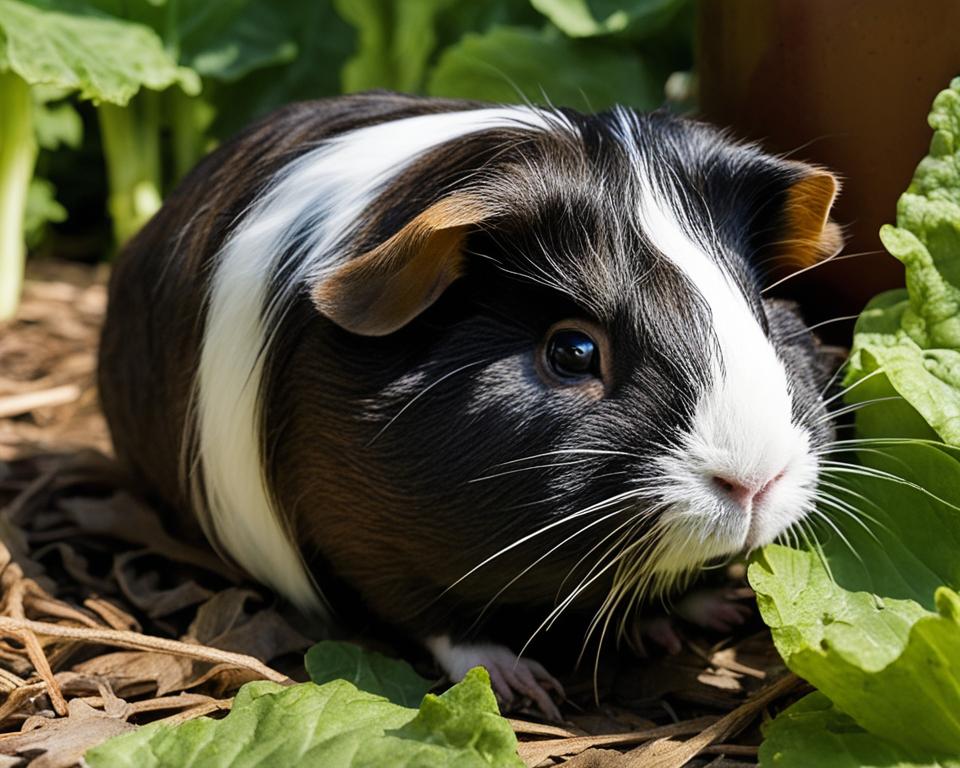
As such, it’s best to avoid feeding rhubarb leaves to your guinea pig altogether. Instead, focus on providing a healthy and balanced diet consisting of hay, fresh vegetables, and appropriate pellets. Your furry friend will thank you for it!
Risk Factors and Precautions
While rhubarb leaves can be tempting to feed your guinea pigs, they contain high levels of oxalic acid, which can cause severe health issues for your furry friends. However, if your guinea pig accidentally ingests a small piece of rhubarb leaf, don’t panic. There are risk factors that can influence the level of harm to your guinea pig, and precautions that you can take to minimize the potential damage.
Risk Factors
- The quantity of rhubarb leaves your guinea pig eats
- The frequency of rhubarb leaf consumption
- The guinea pig’s overall health and age
Always keep in mind the potential danger of feeding rhubarb leaves to your guinea pig. Minimizing the risk of harm to your pet requires taking precautions.
Precautions
- Keep rhubarb leaves out of your guinea pig’s reach at all times
- Regularly examine your guinea pig’s habitat for any unwanted food sources
- Discard rhubarb leaves from your yard or garden to prevent accidental ingestion
- If you have rhubarb in your garden, fence it off or relocate it to a part of the garden that is inaccessible to your guinea pig
- Ensure your guinea pig has a well-balanced diet that meets their nutritional needs so that they are less likely to seek out unsafe food sources
By following these precautions, you can help ensure that your guinea pig stays safe and healthy and protect them from accidentally ingesting rhubarb leaves.
Safe Alternatives to Rhubarb Leaves
To ensure the well-being of your guinea pig, it’s essential to find safe alternatives to rhubarb leaves. While rhubarb leaves aren’t recommended for your furry friend, there are still plenty of safe vegetables and treats that you can include in their diet to meet their nutritional needs. Here are some safe alternatives to consider:
Leafy Greens
Leafy greens are an excellent option for guinea pigs, as they are packed with vitamins and minerals. Some safe leafy greens to try include kale, spinach, and romaine lettuce. Just be sure to wash them thoroughly before feeding them to your pet.
Carrots
Carrots are another great alternative to rhubarb leaves. They provide a good source of vitamin A, which is essential for your guinea pig’s eye health. Cut carrots into small pieces and only feed in moderation to avoid causing digestive problems.
Apples
Apples are a tasty and safe treat for guinea pigs. They are a good source of vitamin C, which is essential for their immune system. Just remember to remove the seeds and core before feeding.
Peppers
Bell peppers are a great alternative to rhubarb leaves, as they are low in calcium and oxalic acid. They also provide a good source of vitamin C. Offer your guinea pig small pieces of red, orange, or yellow pepper, but not green.
Timothy Hay
Timothy hay is an essential component of a guinea pig’s diet. It provides necessary fiber to support their digestive health. Choose high-quality hay that is free of dust and mold.
By incorporating these safe alternatives into your guinea pig’s diet, you can help ensure their nutritional needs are being met without putting them at risk of harm.
The Importance of Consulting a Vet
Guinea pigs are unique pets that require specialized care, especially when it comes to their diet. If you are unsure about the safety of specific foods, like rhubarb leaves, it’s essential to consult a veterinarian who specializes in small animals.
A vet can offer professional guidance tailored to your guinea pig’s specific needs and help you develop a safe and balanced diet. They can also provide insight into the potential risks associated with certain foods and offer alternative options to ensure that your pet gets the proper nutrients they need to thrive.
Remember, guinea pigs are not just cute, furry companions; they are also vulnerable animals that require careful attention. By consulting with a vet, you can ensure that your pet’s dietary needs are met, and they remain healthy, happy, and full of life.
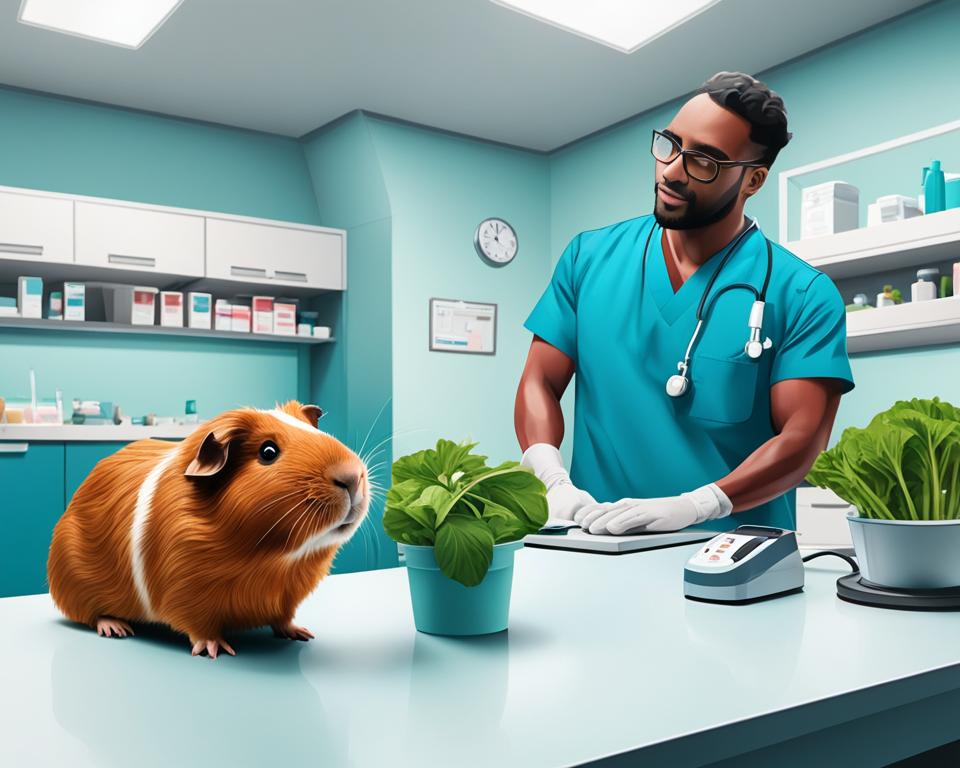
Signs of an Unhealthy Guinea Pig
As a responsible pet owner, it’s essential to be able to recognize signs that your guinea pig may be feeling unwell. Detecting any potential health issues early on can significantly improve your pet’s chances of recovery. Here are some common signs of an unhealthy guinea pig:
- Refusal to eat or drink
- Lethargy or lack of energy
- Weight loss
- Change in breathing patterns
- Coughing or sneezing
- Loss of fur or hair
- Diarrhea or constipation
These symptoms can be indicative of a more serious health problem, including issues related to their diet. It’s important to note that guinea pigs are adept at hiding their pain or discomfort, so it’s crucial to be vigilant in monitoring their behavior and habits.
If you notice any of these signs, it’s best to consult with a veterinarian as soon as possible to determine the cause and seek appropriate treatment.
Dietary Maintenance for Guinea Pigs
Guinea pigs require a well-balanced diet to stay healthy. It’s essential to provide them with a variety of foods, including hay, fresh vegetables, and pellets. Here are some tips for establishing a healthy and well-rounded diet for your furry friend:
- Make hay the foundation of your guinea pig’s diet. Offer unlimited access to high-quality hay, such as Timothy hay, Orchard grass, or Meadow hay. Hay is an excellent source of fiber, which aids digestion and helps prevent some common health problems.
- Supplement their diet with fresh vegetables daily. Guinea pigs will thrive if you offer a variety of vegetables, such as bell peppers, carrots, spinach, kale, and broccoli. Vegetables are a great source of vitamins and minerals that are vital for their health.
- Always provide high-quality pellets specifically formulated for guinea pigs. Ensure they are receiving a balanced diet with the right amount of protein, fiber, and nutrients.
- Limit the number of treats in your guinea pig’s diet. Too many fruits or sugary treats can cause weight gain and other health problems.
- Monitor their food intake, and adjust their diet as necessary. Guinea pigs have different nutritional needs at different stages of their lives. Observe their behavior carefully to ensure they are eating well and are active.
By following these guidelines, you can maintain a healthy and balanced diet for your guinea pig. Remember to consult your veterinarian for advice on your pet’s specific dietary requirements.
Conclusion
It is always important to prioritize the health of your guinea pig, especially when it comes to their diet. After considering the potential risks associated with rhubarb leaves, it’s best to avoid feeding them to your furry friends altogether. Instead, focus on providing a well-balanced diet consisting of hay, fresh vegetables, and appropriate pellets.
Consulting a vet is crucial for professional guidance on your guinea pig’s diet, as they can provide tailored recommendations based on your pet’s individual needs. Regularly monitoring your guinea pig’s food intake and being aware of the signs of an unhealthy diet can also help ensure their overall well-being.
By implementing proper dietary maintenance, you can help your guinea pig lead a healthy and happy life. Remember to always prioritize their health and seek professional advice when in doubt.
FAQ
Can guinea pigs safely consume rhubarb leaves?
No, guinea pigs should not consume rhubarb leaves. Rhubarb leaves contain high levels of oxalic acid, which can be toxic to guinea pigs when ingested in large quantities.
What are the essential components of a guinea pig’s diet?
A guinea pig’s diet should consist of hay, fresh vegetables, and pellets. Hay provides crucial fiber, while fresh vegetables offer important vitamins and minerals. Pellets should be given in moderation as a supplemental food.
What are rhubarb leaves?
Rhubarb leaves are the leaves of the rhubarb plant. They are large, green, and have an overall triangular shape. Rhubarb leaves are typically not consumed by humans and are considered toxic.
How toxic are rhubarb leaves for guinea pigs?
Rhubarb leaves are highly toxic to guinea pigs due to their high oxalic acid content. Ingesting even small amounts of rhubarb leaves can cause serious health issues and potentially be fatal for guinea pigs.
What are the risk factors and precautions to consider regarding rhubarb leaves?
Factors that increase the risk associated with rhubarb leaves include the quantity consumed, the duration of exposure, and any pre-existing health conditions of the guinea pig. To minimize harm, it is best to prevent guinea pigs from accessing rhubarb leaves entirely.
What are safe alternatives to rhubarb leaves for guinea pigs?
Safe alternatives to rhubarb leaves include various vegetables such as lettuce, cucumber, bell peppers, and carrots. It is crucial to provide a balanced and varied diet that meets the nutritional needs of the guinea pig.
Why is it important to consult a veterinarian regarding guinea pig diets?
Veterinarians are knowledgeable about guinea pig health and can provide professional advice tailored to your specific guinea pig’s needs. They can guide you on appropriate dietary choices and address any concerns or questions you may have regarding your pet’s diet.
What are the signs of an unhealthy guinea pig?
Signs of an unhealthy guinea pig may include changes in appetite, weight loss, lethargy, abnormal stool or urine, respiratory issues, and rough or dull fur. If you notice any of these signs, it is essential to consult a veterinarian for further evaluation and treatment.
How should I maintain the dietary needs of my guinea pig?
To maintain your guinea pig’s dietary needs, provide a well-balanced diet consisting of hay, fresh vegetables, and appropriate pellets. Monitor their food intake regularly and make adjustments as needed based on their age, weight, and overall health.
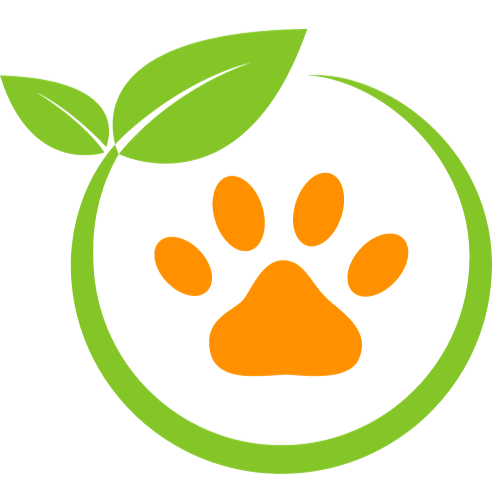
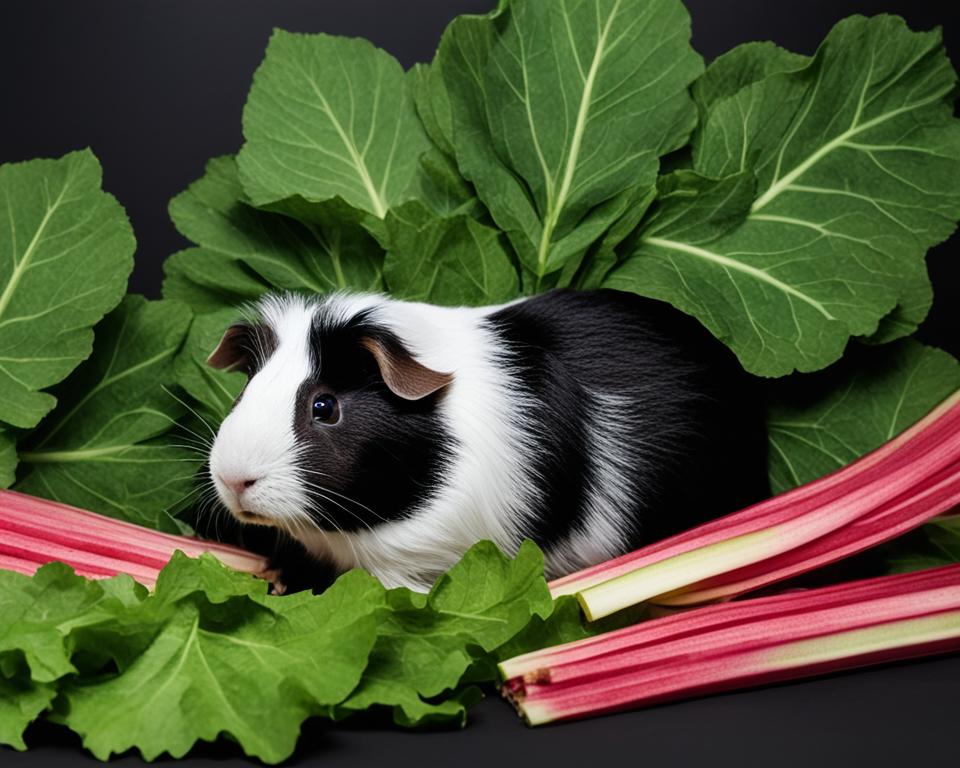
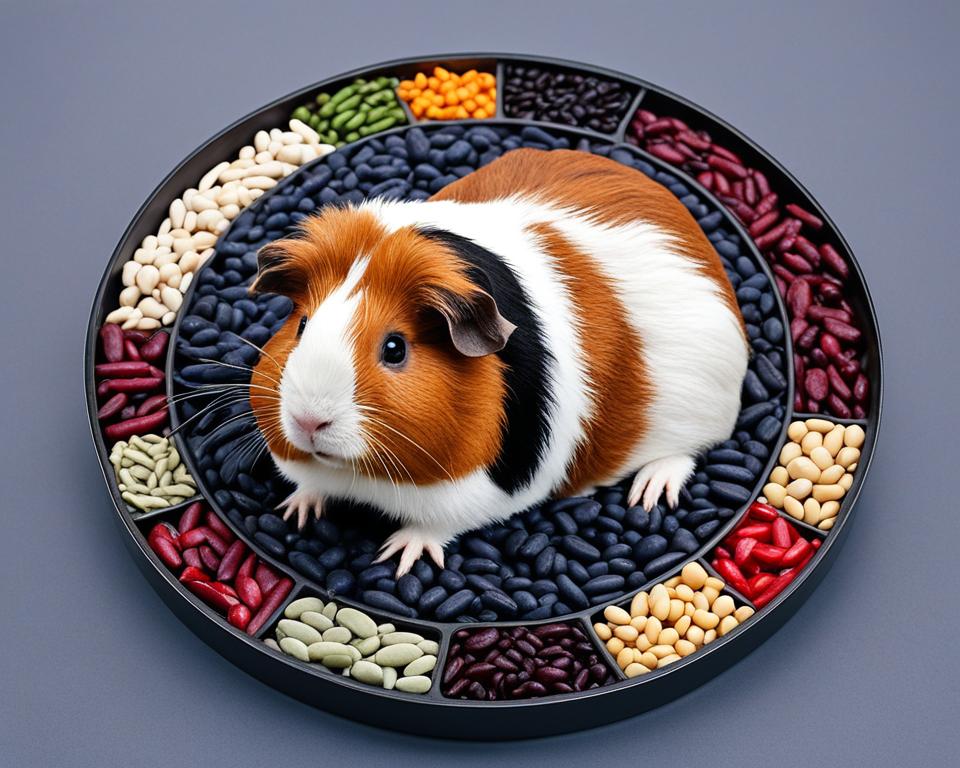
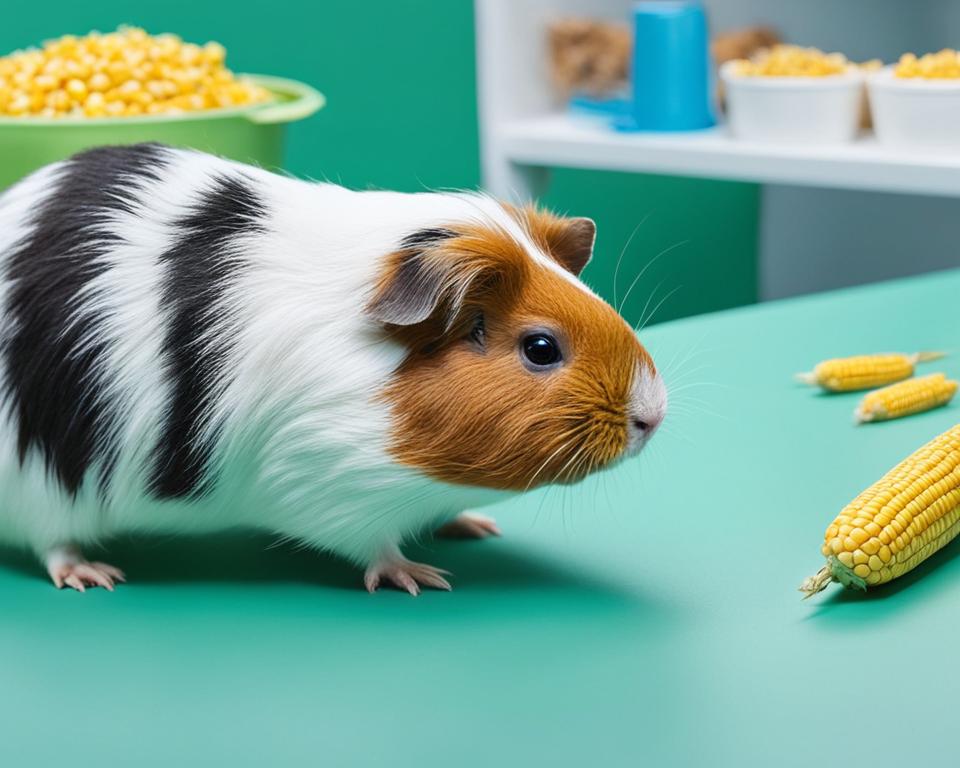
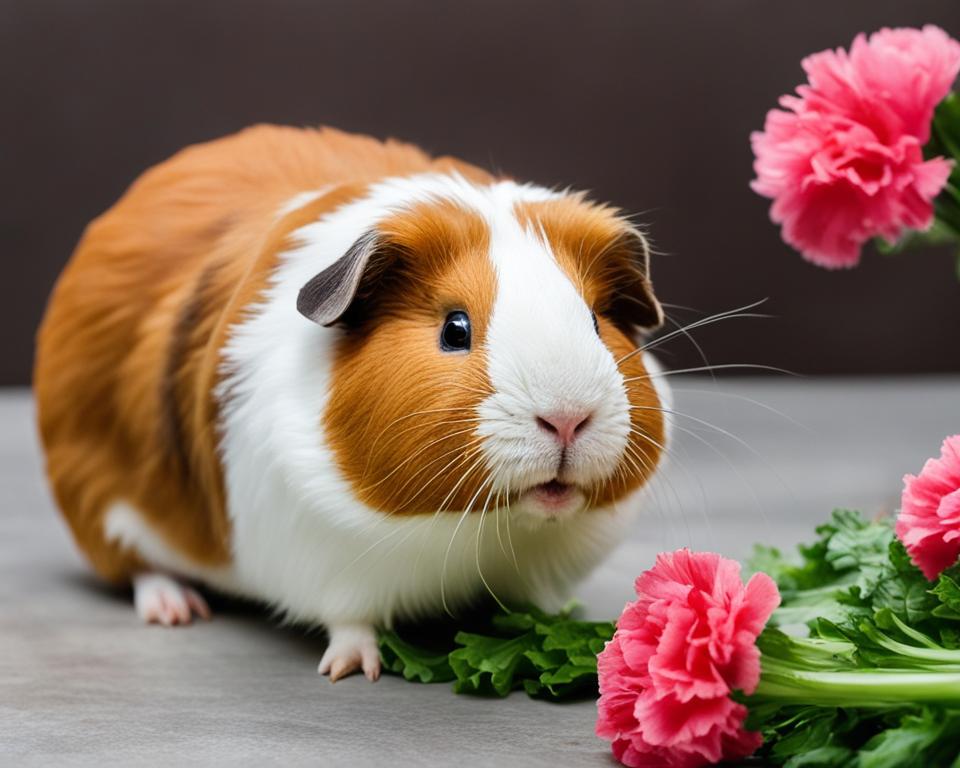
Leave a Reply